lock JEEP COMPASS LATITUDE 2018 Owners Manual
[x] Cancel search | Manufacturer: JEEP, Model Year: 2018, Model line: COMPASS LATITUDE, Model: JEEP COMPASS LATITUDE 2018Pages: 518, PDF Size: 4.8 MB
Page 35 of 518
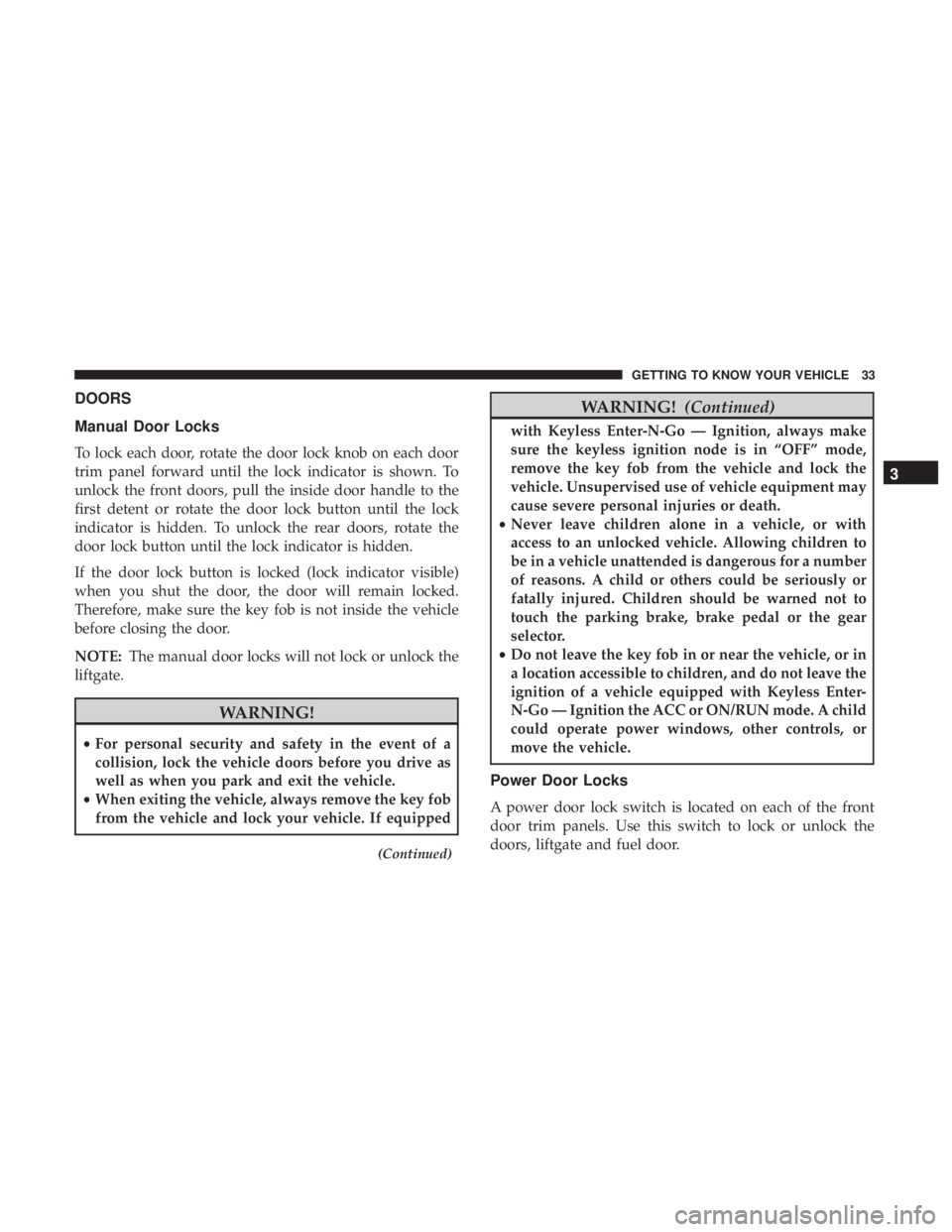
DOORS
Manual Door Locks
To lock each door, rotate the door lock knob on each door
trim panel forward until the lock indicator is shown. To
unlock the front doors, pull the inside door handle to the
first detent or rotate the door lock button until the lock
indicator is hidden. To unlock the rear doors, rotate the
door lock button until the lock indicator is hidden.
If the door lock button is locked (lock indicator visible)
when you shut the door, the door will remain locked.
Therefore, make sure the key fob is not inside the vehicle
before closing the door.
NOTE:The manual door locks will not lock or unlock the
liftgate.
Page 41 of 518
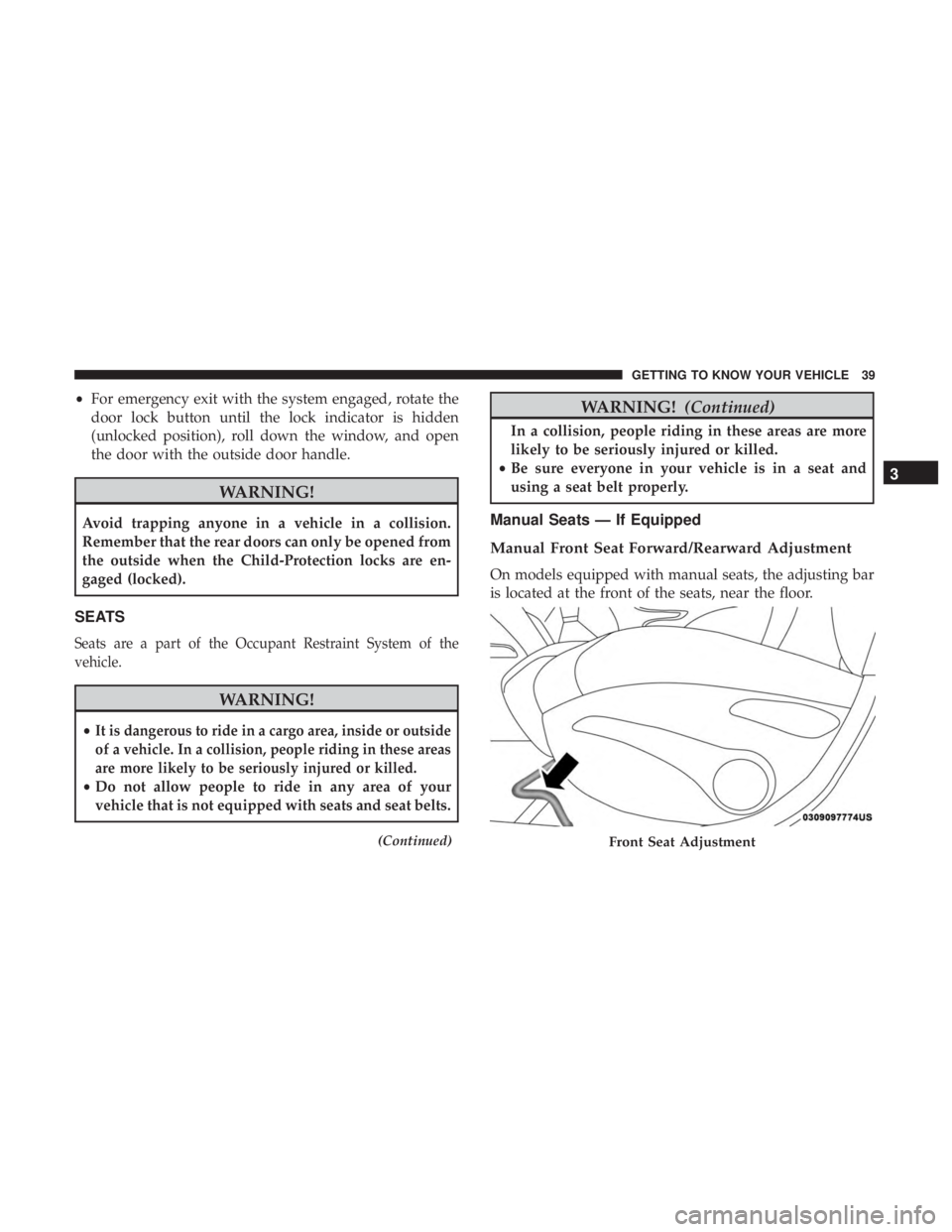
•For emergency exit with the system engaged, rotate the
door lock button until the lock indicator is hidden
(unlocked position), roll down the window, and open
the door with the outside door handle.
Page 48 of 518
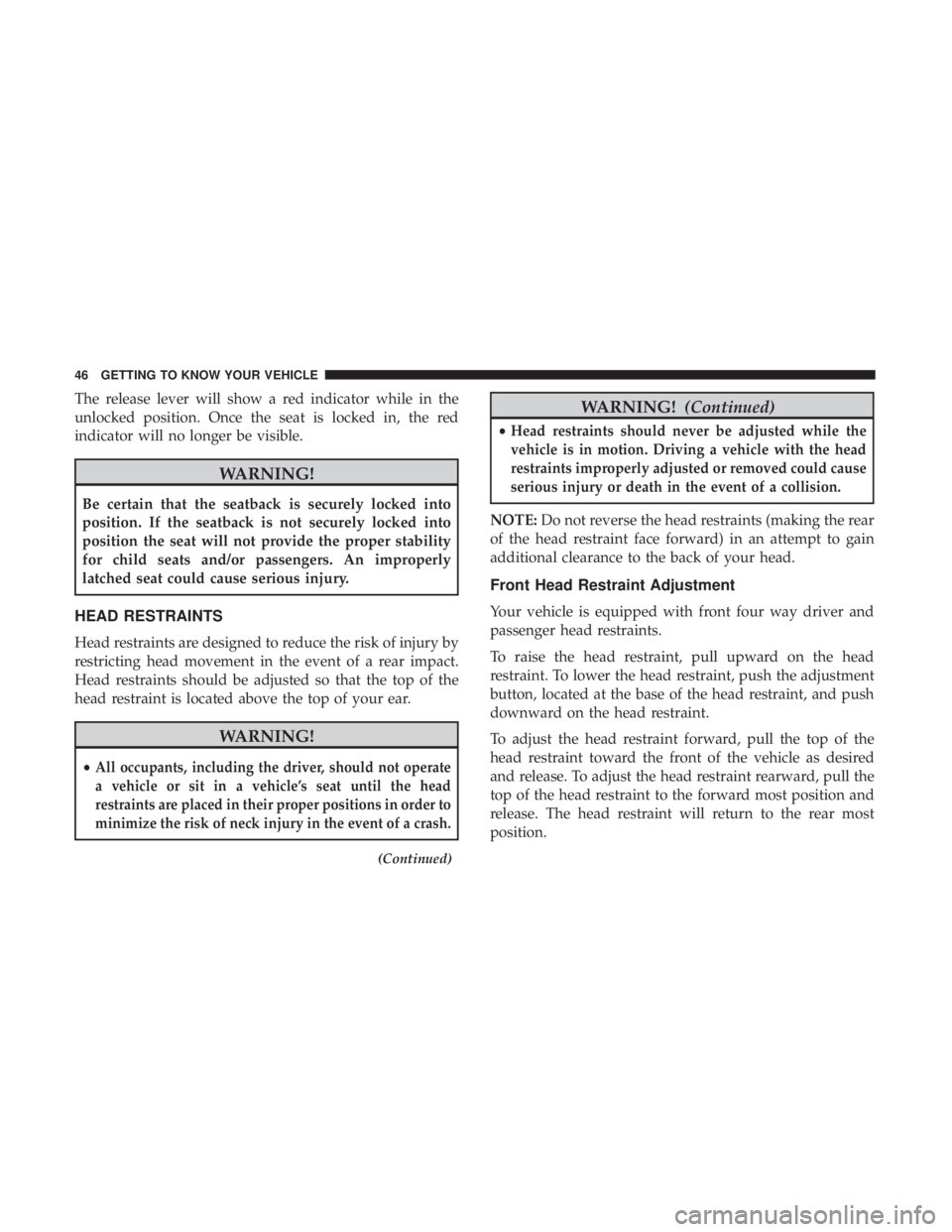
The release lever will show a red indicator while in the
unlocked position. Once the seat is locked in, the red
indicator will no longer be visible.
Page 51 of 518
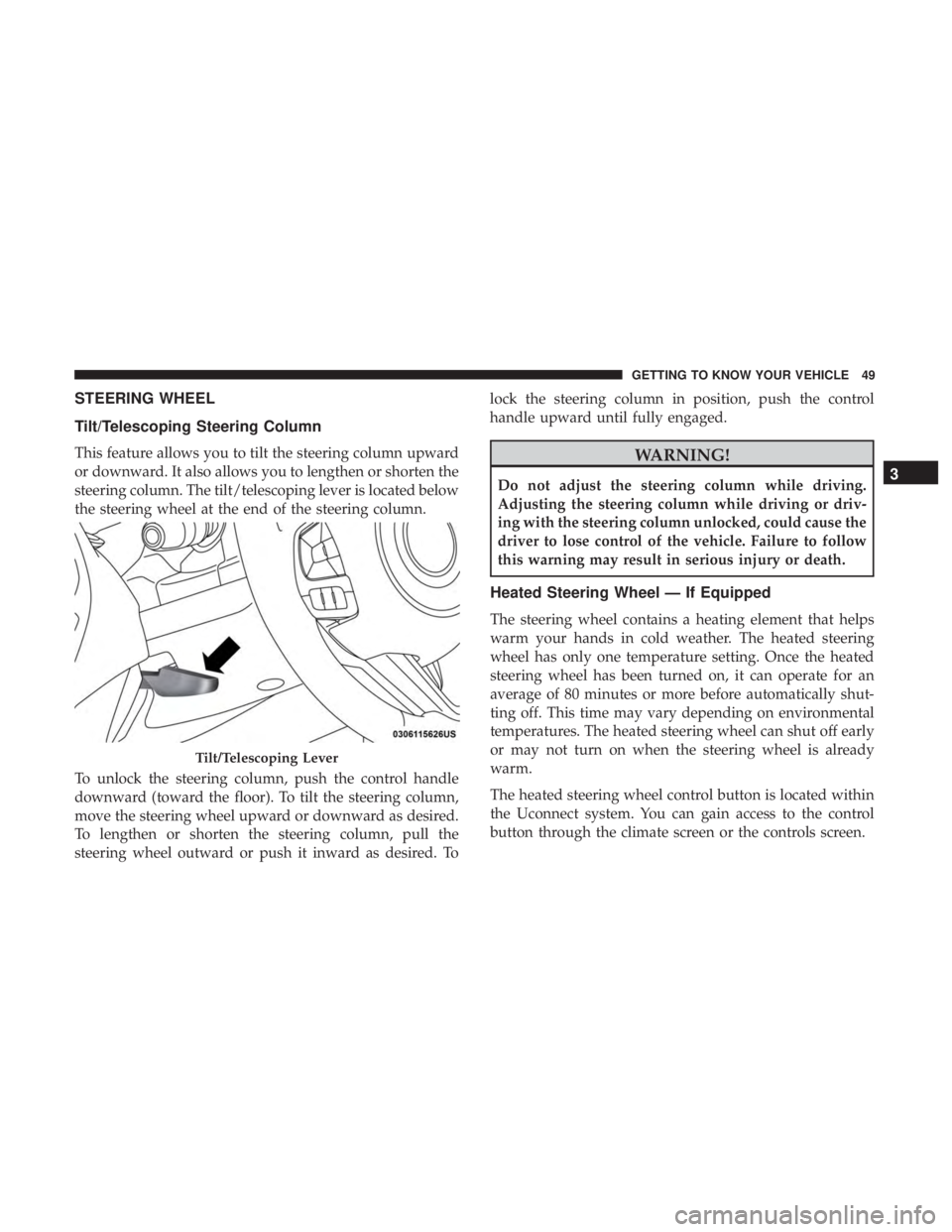
STEERING WHEEL
Tilt/Telescoping Steering Column
This feature allows you to tilt the steering column upward
or downward. It also allows you to lengthen or shorten the
steering column. The tilt/telescoping lever is located below
the steering wheel at the end of the steering column.
To unlock the steering column, push the control handle
downward (toward the floor). To tilt the steering column,
move the steering wheel upward or downward as desired.
To lengthen or shorten the steering column, pull the
steering wheel outward or push it inward as desired. Tolock the steering column in position, push the control
handle upward until fully engaged.
Page 82 of 518
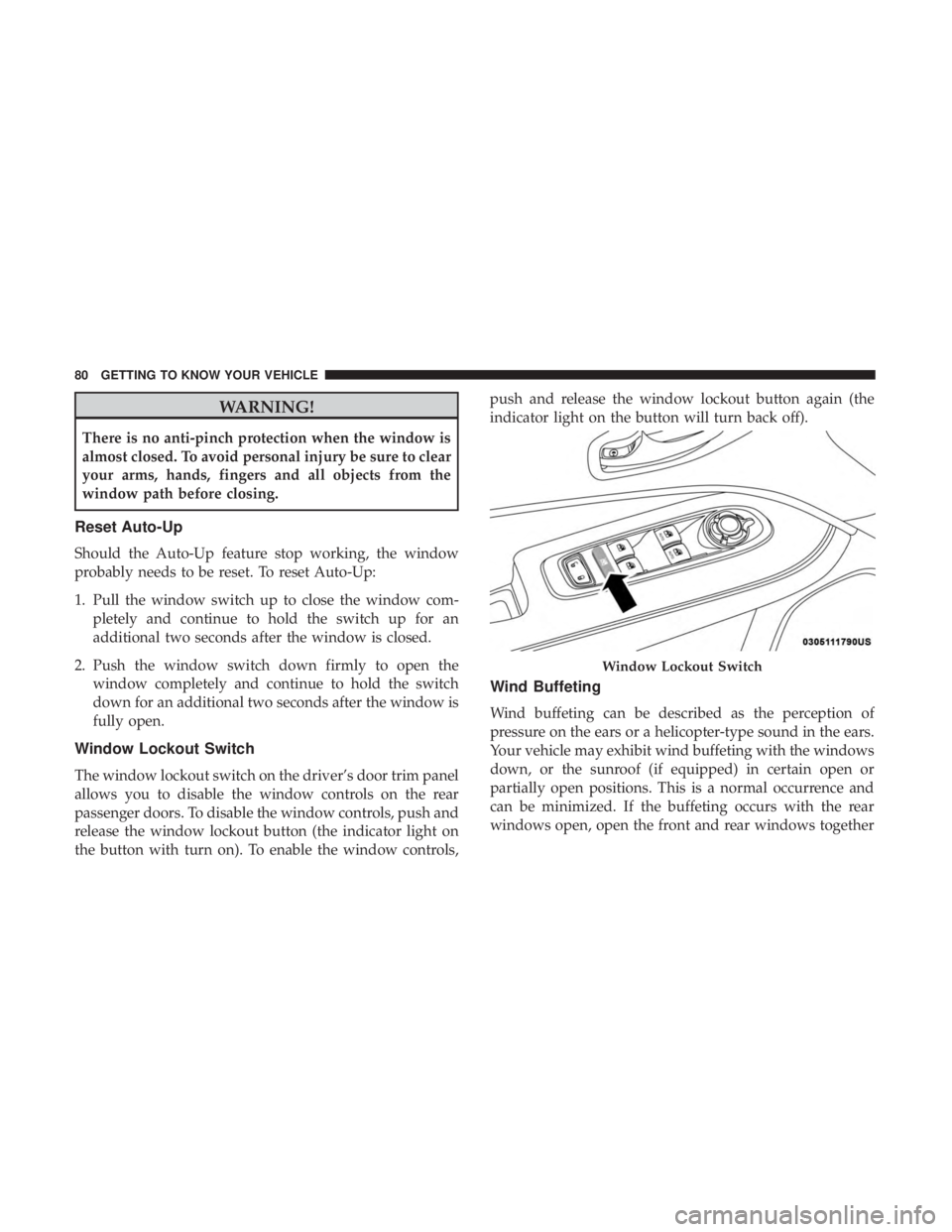
WARNING!
There is no anti-pinch protection when the window is
almost closed. To avoid personal injury be sure to clear
your arms, hands, fingers and all objects from the
window path before closing.
Reset Auto-Up
Should the Auto-Up feature stop working, the window
probably needs to be reset. To reset Auto-Up:
1. Pull the window switch up to close the window com-pletely and continue to hold the switch up for an
additional two seconds after the window is closed.
2. Push the window switch down firmly to open the window completely and continue to hold the switch
down for an additional two seconds after the window is
fully open.
Window Lockout Switch
The window lockout switch on the driver’s door trim panel
allows you to disable the window controls on the rear
passenger doors. To disable the window controls, push and
release the window lockout button (the indicator light on
the button with turn on). To enable the window controls, push and release the window lockout button again (the
indicator light on the button will turn back off).
Wind Buffeting
Wind buffeting can be described as the perception of
pressure on the ears or a helicopter-type sound in the ears.
Your vehicle may exhibit wind buffeting with the windows
down, or the sunroof (if equipped) in certain open or
partially open positions. This is a normal occurrence and
can be minimized. If the buffeting occurs with the rear
windows open, open the front and rear windows together
Page 88 of 518

LIFTGATE
Opening
To Unlock/Enter The Liftgate
The liftgate may be released by the overhead console
switch or the outside handle.
The overhead console switch will release the liftgate when
the liftgate is unlocked or locked. The outside handle
requires the liftgate to be unlocked.NOTE:
Use the interior door lock/unlock button on the
door panel or the key fob to lock and unlock the liftgate.
The manual door locks on the doors and the exterior door
lock cylinder will not lock and unlock the liftgate.
Page 90 of 518
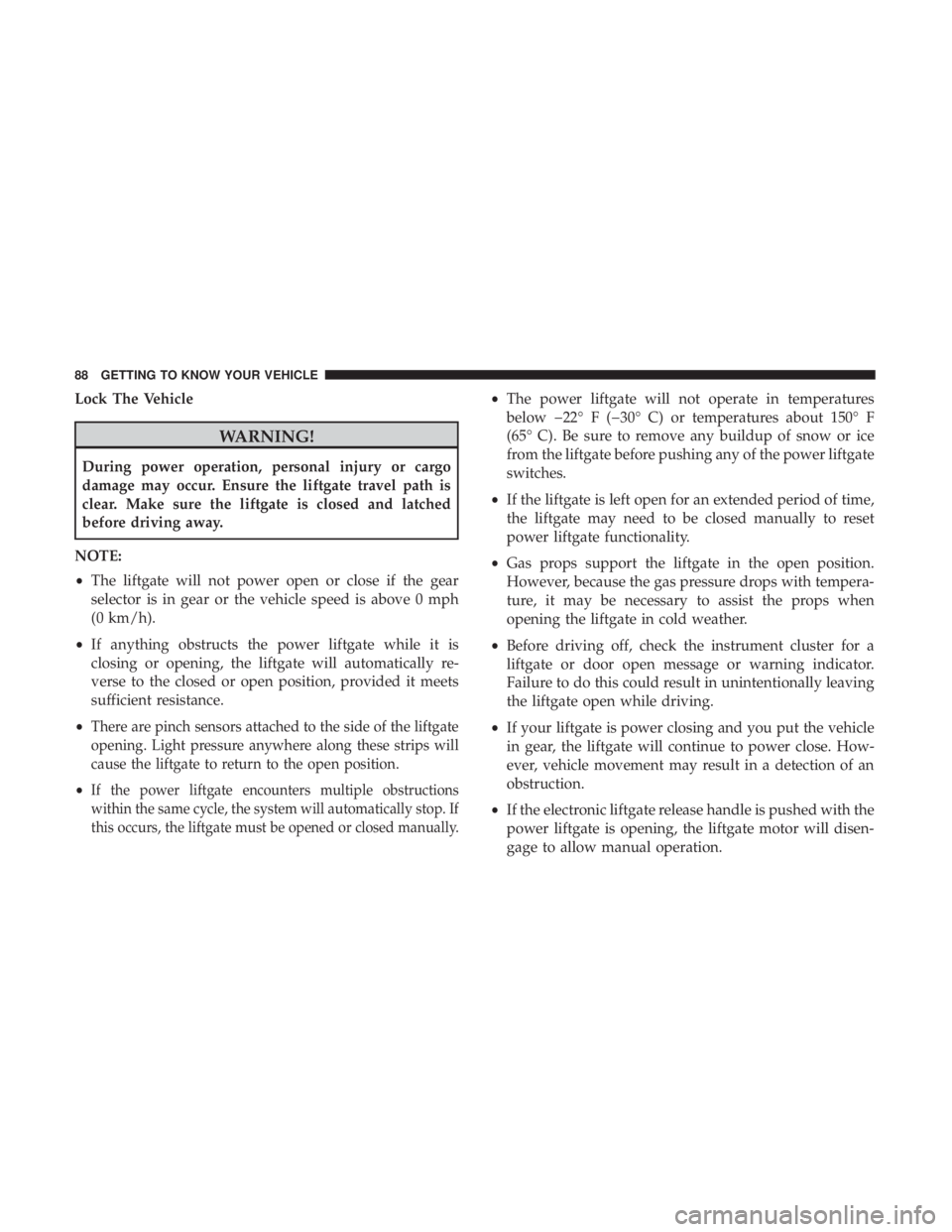
Lock The Vehicle
Page 95 of 518
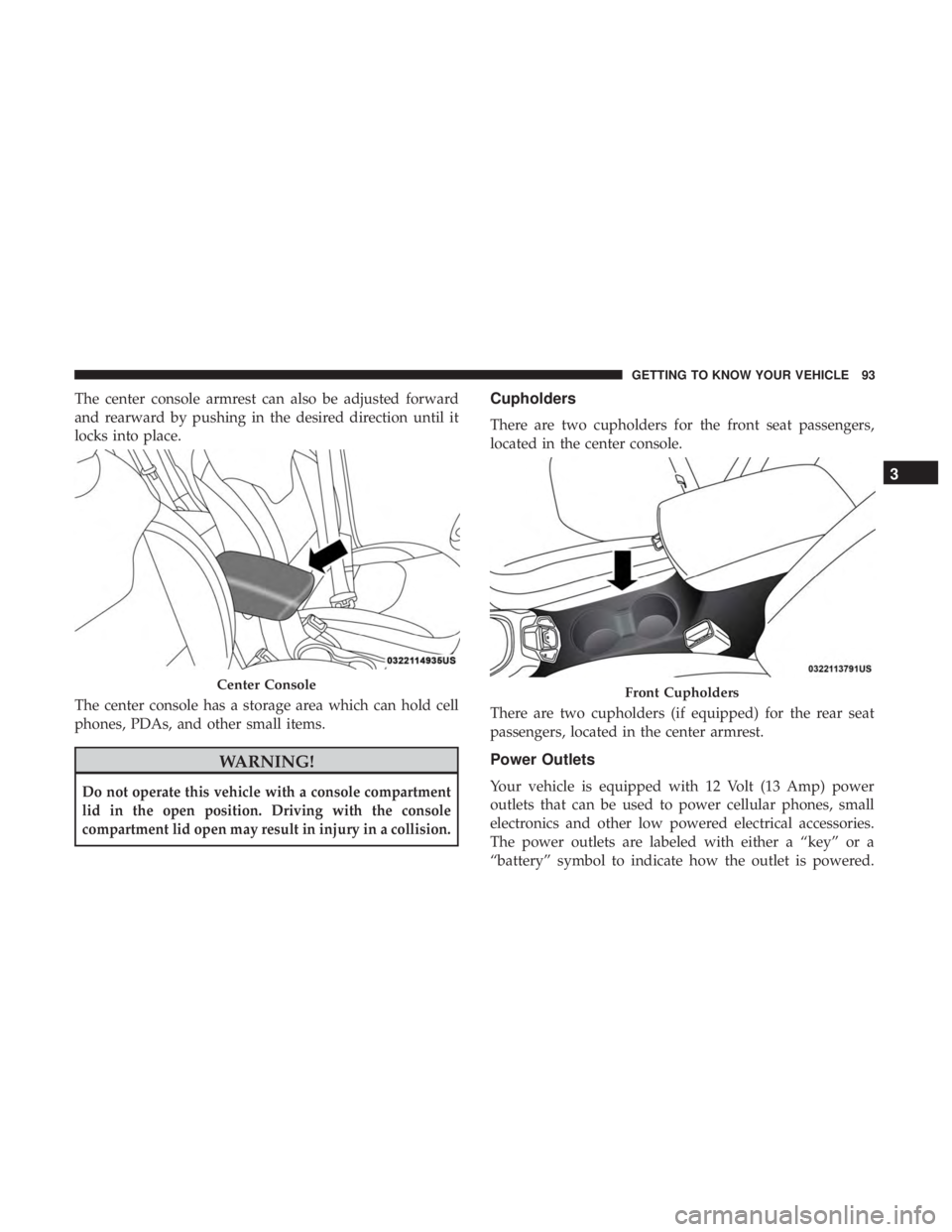
The center console armrest can also be adjusted forward
and rearward by pushing in the desired direction until it
locks into place.
The center console has a storage area which can hold cell
phones, PDAs, and other small items.
Page 136 of 518
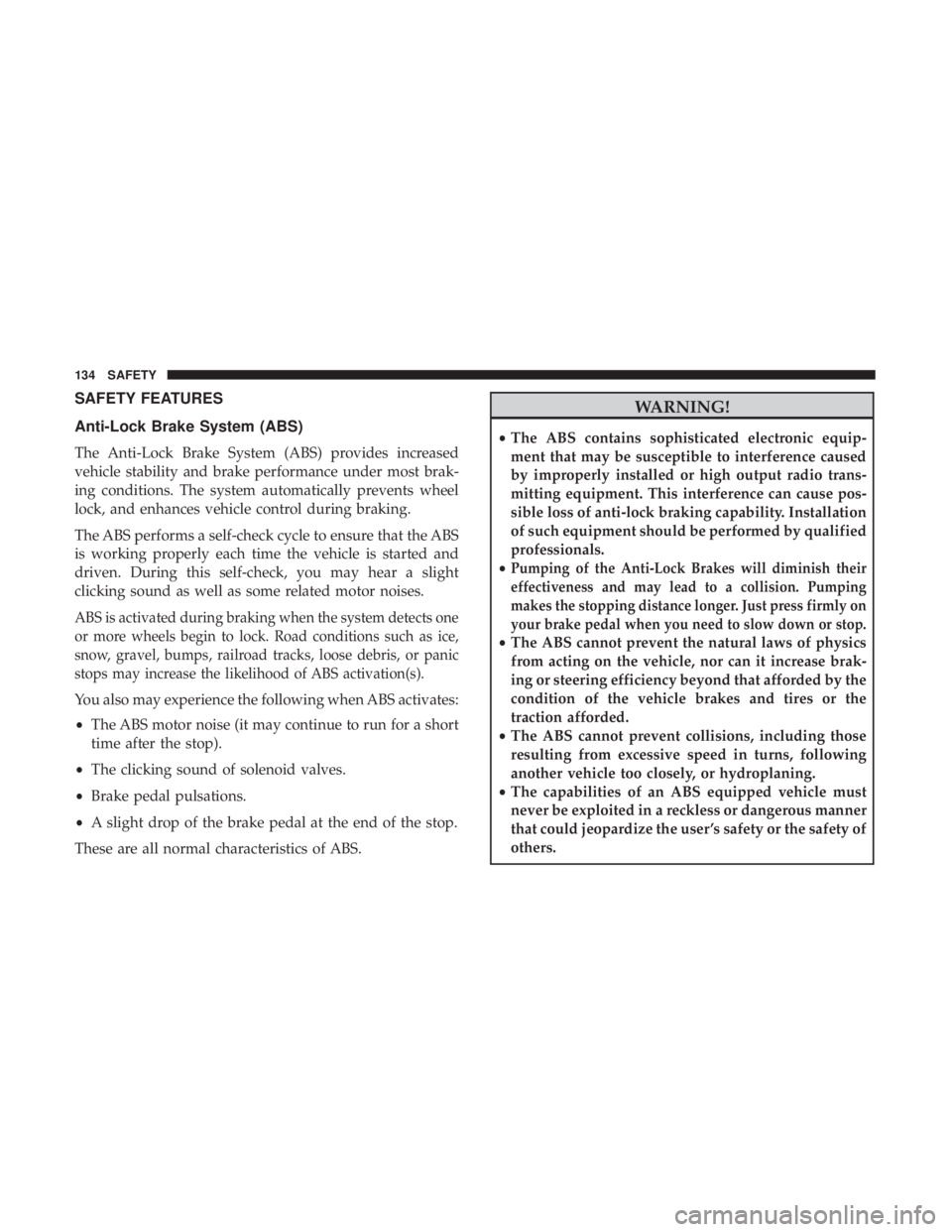
SAFETY FEATURES
Anti-Lock Brake System (ABS)
The Anti-Lock Brake System (ABS) provides increased
vehicle stability and brake performance under most brak-
ing conditions. The system automatically prevents wheel
lock, and enhances vehicle control during braking.
The ABS performs a self-check cycle to ensure that the ABS
is working properly each time the vehicle is started and
driven. During this self-check, you may hear a slight
clicking sound as well as some related motor noises.
ABS is activated during braking when the system detects one
or more wheels begin to lock. Road conditions such as ice,
snow, gravel, bumps, railroad tracks, loose debris, or panic
stops may increase the likelihood of ABS activation(s).
You also may experience the following when ABS activates:
•The ABS motor noise (it may continue to run for a short
time after the stop).
• The clicking sound of solenoid valves.
• Brake pedal pulsations.
• A slight drop of the brake pedal at the end of the stop.
These are all normal characteristics of ABS.
Page 138 of 518
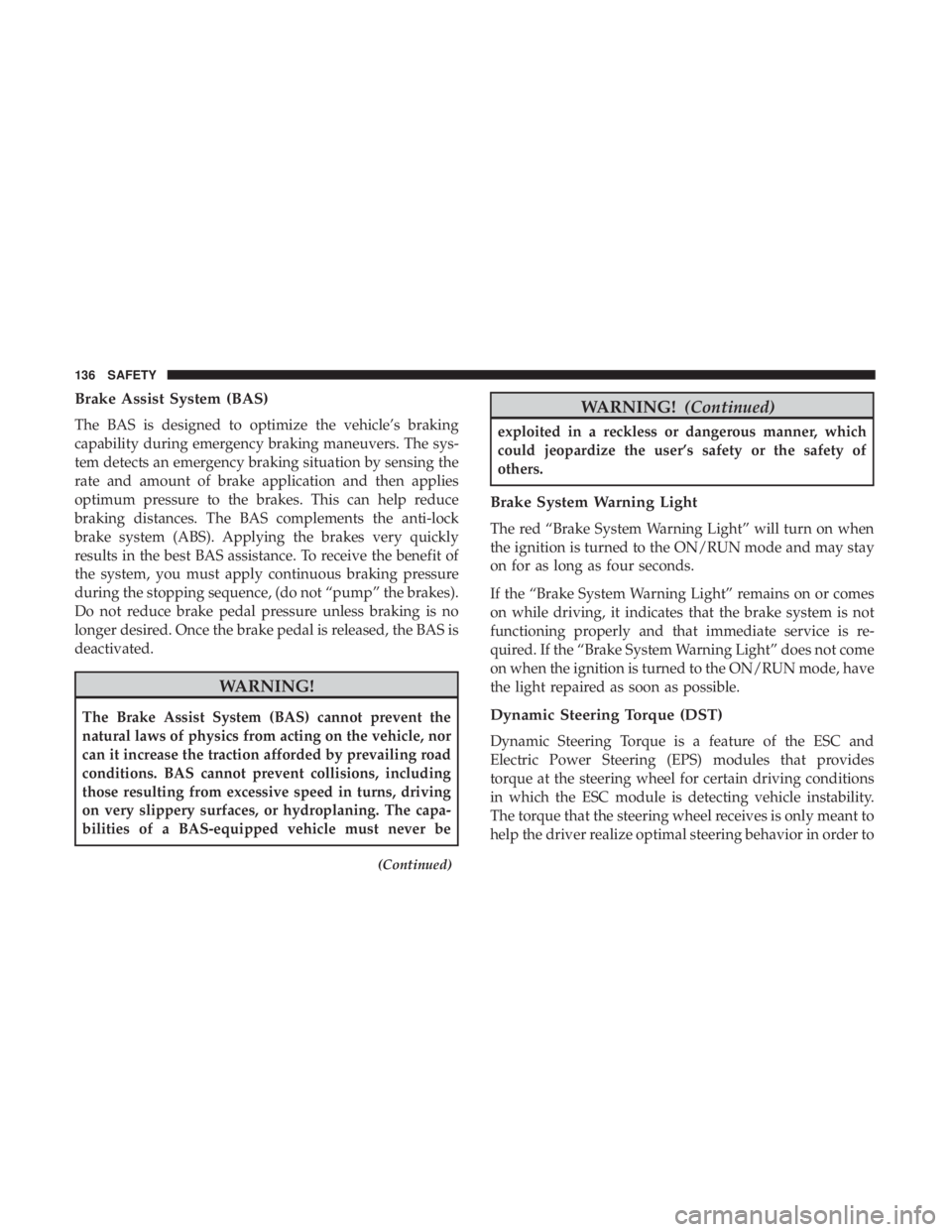
Brake Assist System (BAS)
The BAS is designed to optimize the vehicle’s braking
capability during emergency braking maneuvers. The sys-
tem detects an emergency braking situation by sensing the
rate and amount of brake application and then applies
optimum pressure to the brakes. This can help reduce
braking distances. The BAS complements the anti-lock
brake system (ABS). Applying the brakes very quickly
results in the best BAS assistance. To receive the benefit of
the system, you must apply continuous braking pressure
during the stopping sequence, (do not “pump” the brakes).
Do not reduce brake pedal pressure unless braking is no
longer desired. Once the brake pedal is released, the BAS is
deactivated.